German Marder III — Nazi Frankenstein Tank Destroyer
October 14th, 2023
11 minute read
In today’s article, Tom Laemlein examines the German tank destroyer called the Marder III. An improvised anti-tank weapon, the Marder III series was developed to overcome the improved Russian tank designs the Wehrmacht faced on the Eastern Front. There were various models, or Ausführung (Ausf.), fielded during World War II, and they were more successful than one might assume.
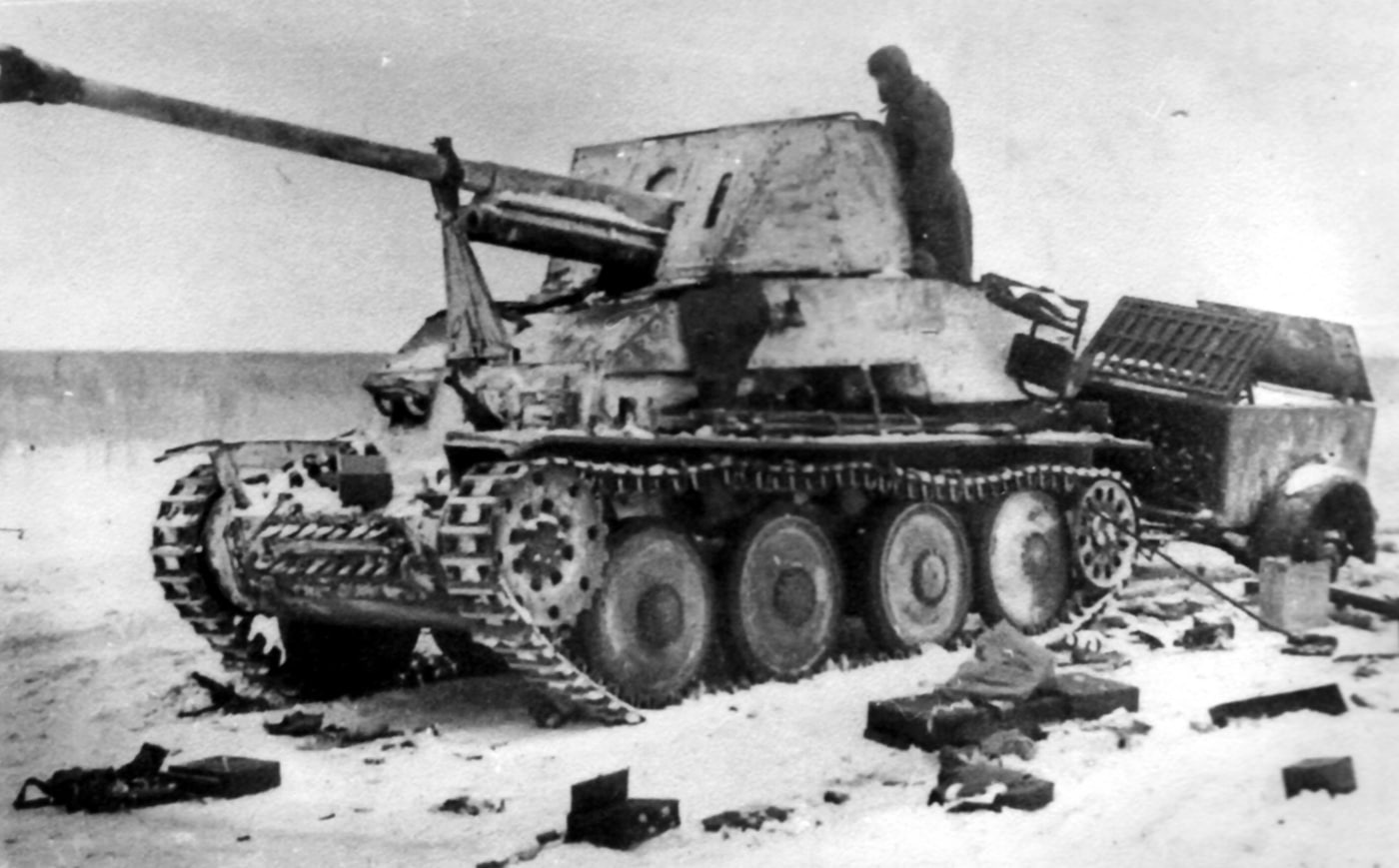
The current war in Ukraine has created more discussion about tanks and armored vehicles than at any time since the end of World War II. In 1945, even as the Third Reich lay in ruins, the consensus of public and military opinion was that German tanks had been nearly unstoppable armored behemoths. But it was not always that way during WWII, and the roots of the armored arms race can be traced to the Russian front, a battlefield that was often invisible to the eyes of the Western allies.
Blazing the Trail of the Blitzkrieg
With the fall of France in June 1940, Germany’s Panzer force had already become legendary. The waters of the English Channel seemed the only thing capable of stopping Nazi tanks from rolling across Britain and winning total victory in Western Europe. The speed of the German advance was unbelievable, and the Panzers charged almost unmolested across Belgium and France, while Stukas screamed overhead.
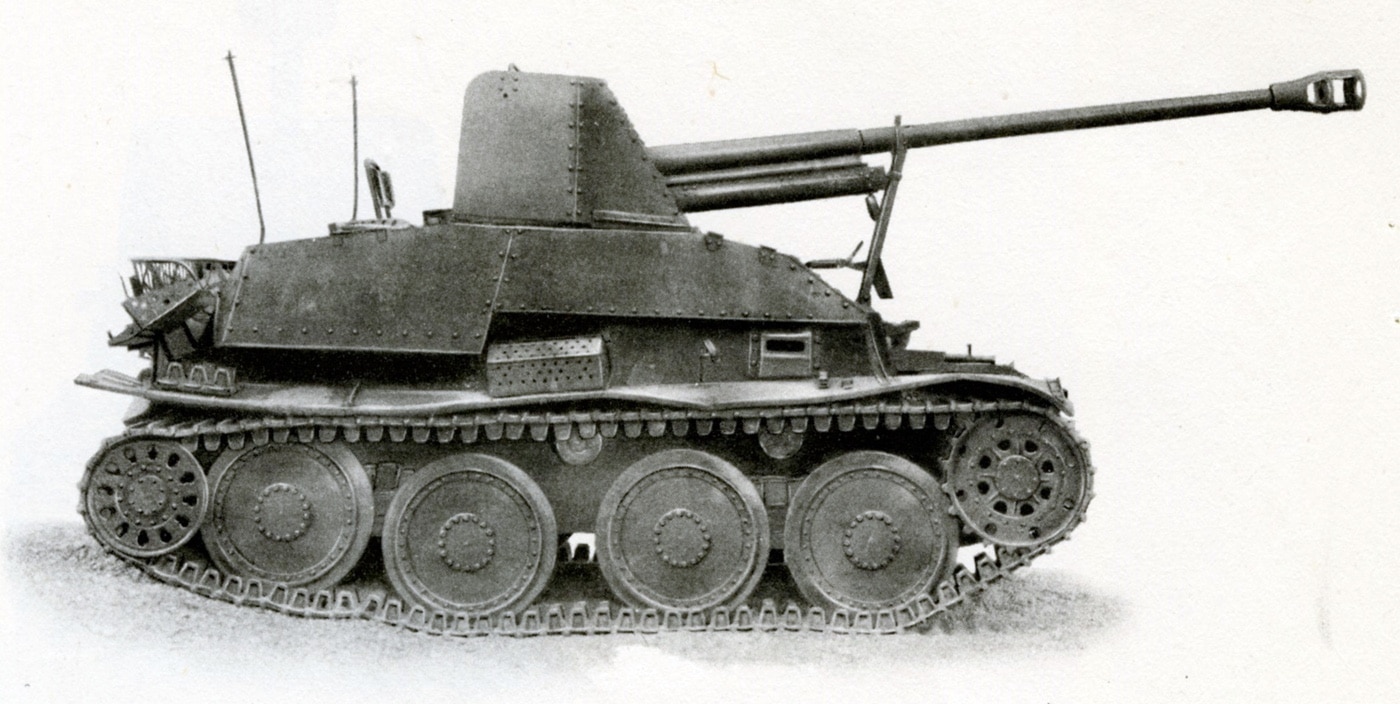
The Germans would come to learn however, that their remarkable successes in 1939-40 were more a product of their new combined arms tactics, rather than the quality of their early war tank designs. Even while Germany’s Panzer forces were engrossed in their own press clippings, they were soon in for a major technological shock.
Russians Teach Harsh Lessons
When Hitler turned his attention to the East in the summer of 1941, German tanks were little changed from the year before. Many of the light Panzer I and Panzer II tanks remained in service, and these were ineffective in tank fighting. Panzer III armament had grown from a 37mm to a short-barrel 50mm gun (KwK 38 L/42), and the Panzer IV retained its low-velocity 75mm(KwK 37 L/24).
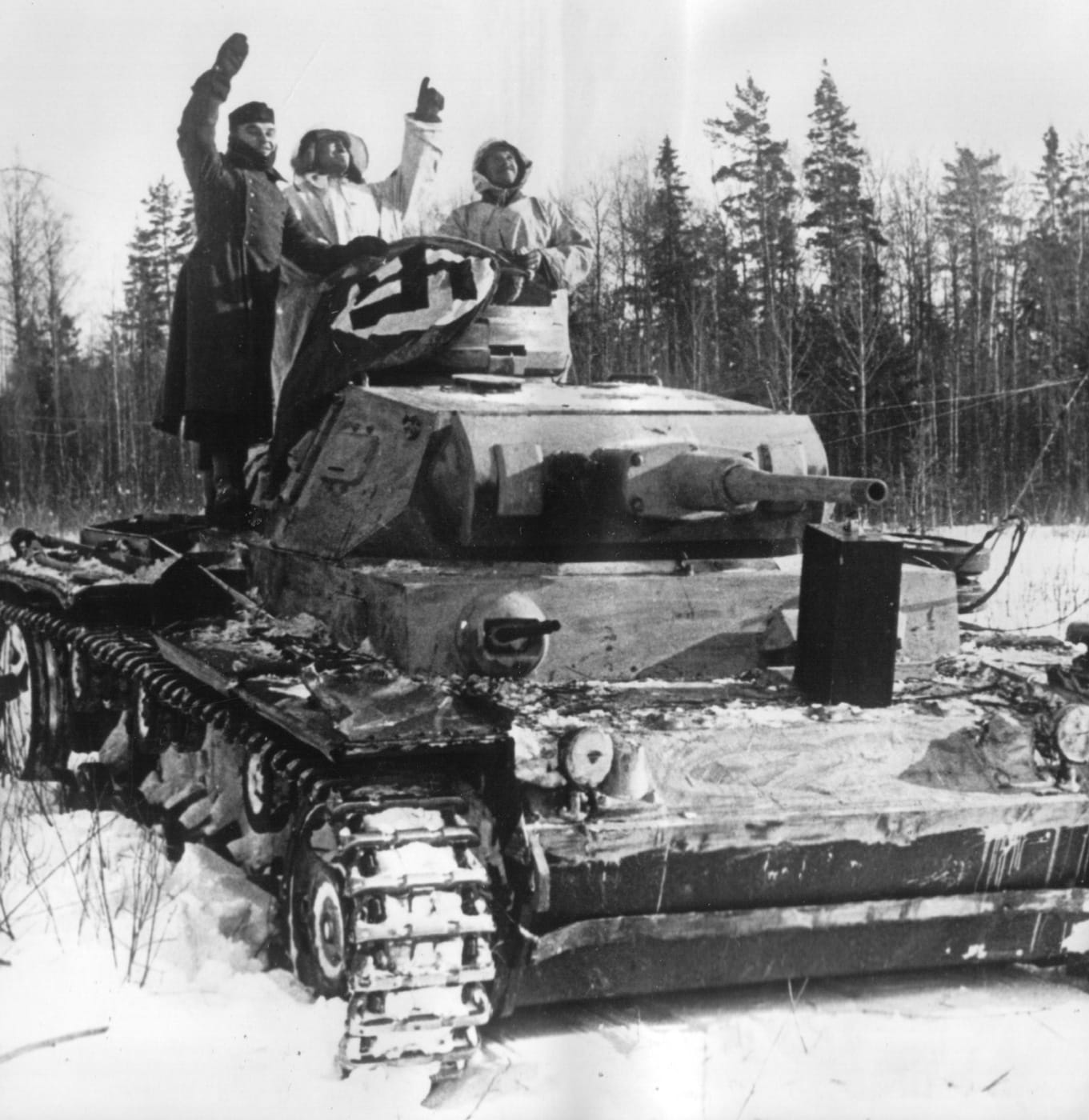
In the opening stages of Operation Barbarossa, the Panzers slashed deep into Soviet territory, capturing, or crushing entire Red Army divisions. Even so, the 6-to-1 tank-kill ratio in the Germans favor was particularly deceiving. Among the Red Army’s plentiful and aging T-26 and BT-types (cavalry tanks), two new types appeared: The T-34 medium tank and the KV-1 heavy tank. These new armored opponents created quite a shock among the Panzer troops and German infantry anti-tank units.
[Be sure to read our article on the Soviet T-26 tanks here.]
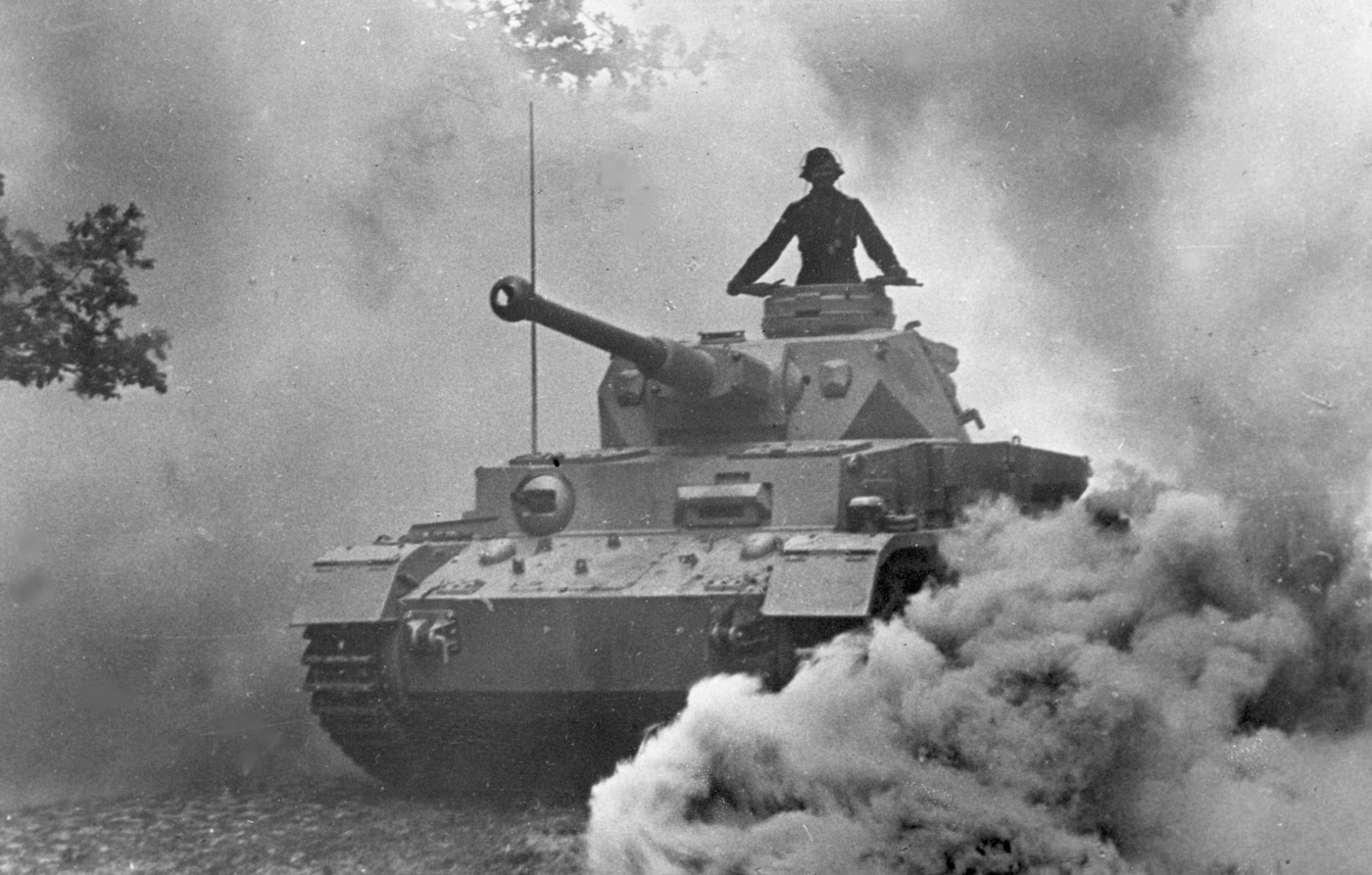
Both vehicles carried a 76.2mm main gun, which outclassed anything carried by German tanks at that time. Not only was the 29-ton T-34 fast, but it also incorporated a new concept of dramatically sloped armor. On the T-34, its 47mm frontal armor was sloped at 60 degrees, and its 45mm side armor was sloped at 41 degrees — capably deflecting many shots that might otherwise have penetrated. While the 50-ton KV-1 was plodding in its movements, its armor thickness was particularly impressive. It had 90mm on its front plate and 75mm on its sides.
[Catch the full story on the Nazi-Busting Soviet T-34 Tanks.]
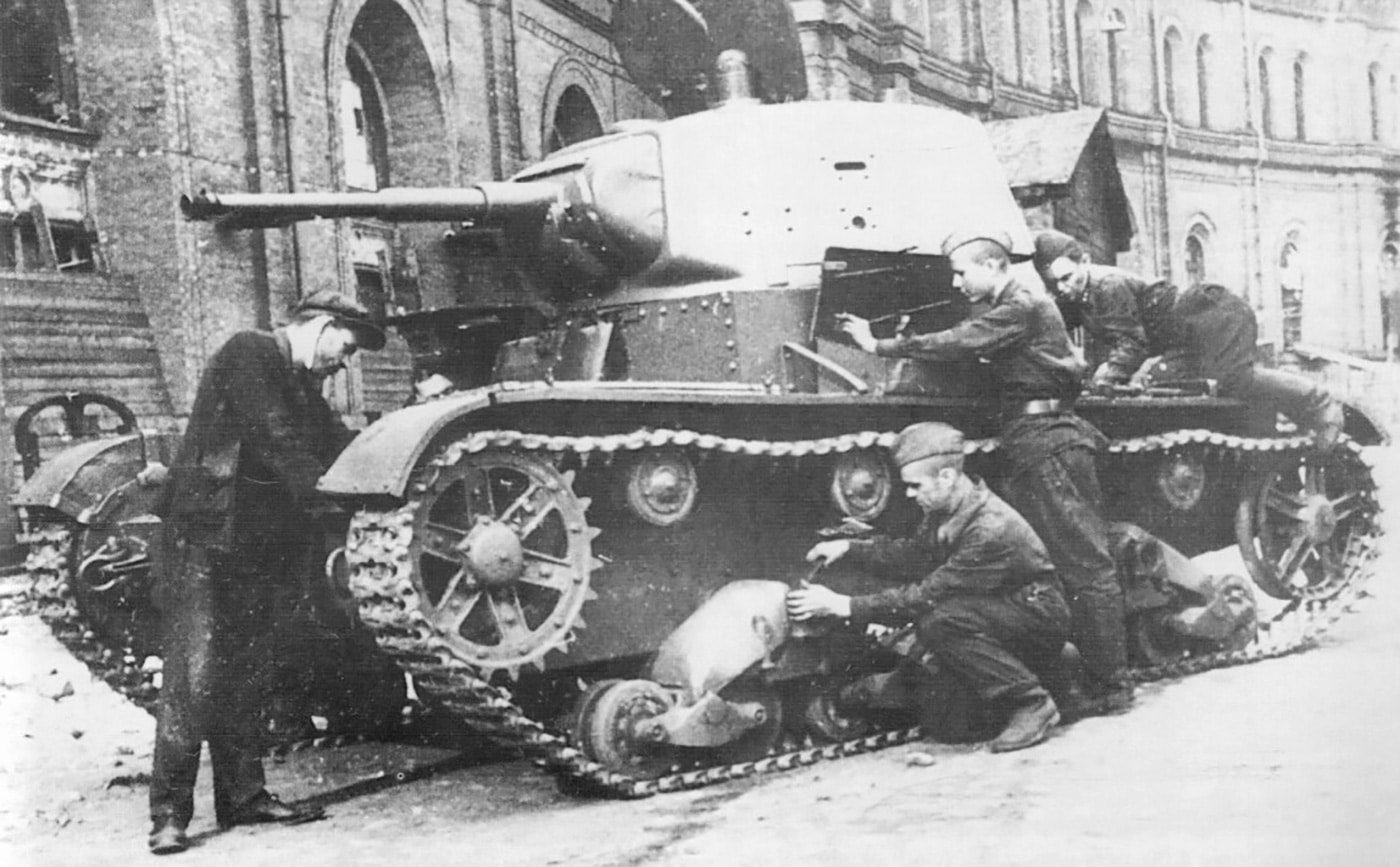
Particularly troubling for the German infantry was that their most numerous anti-tank guns at the time, the 37mm Pak 36, could barely scratch the armor of the latest Soviet tanks. Meanwhile, the 50mm Pak 38 was only available in small numbers, and this could only penetrate the new Red armored threats from the side, and then only at short range.
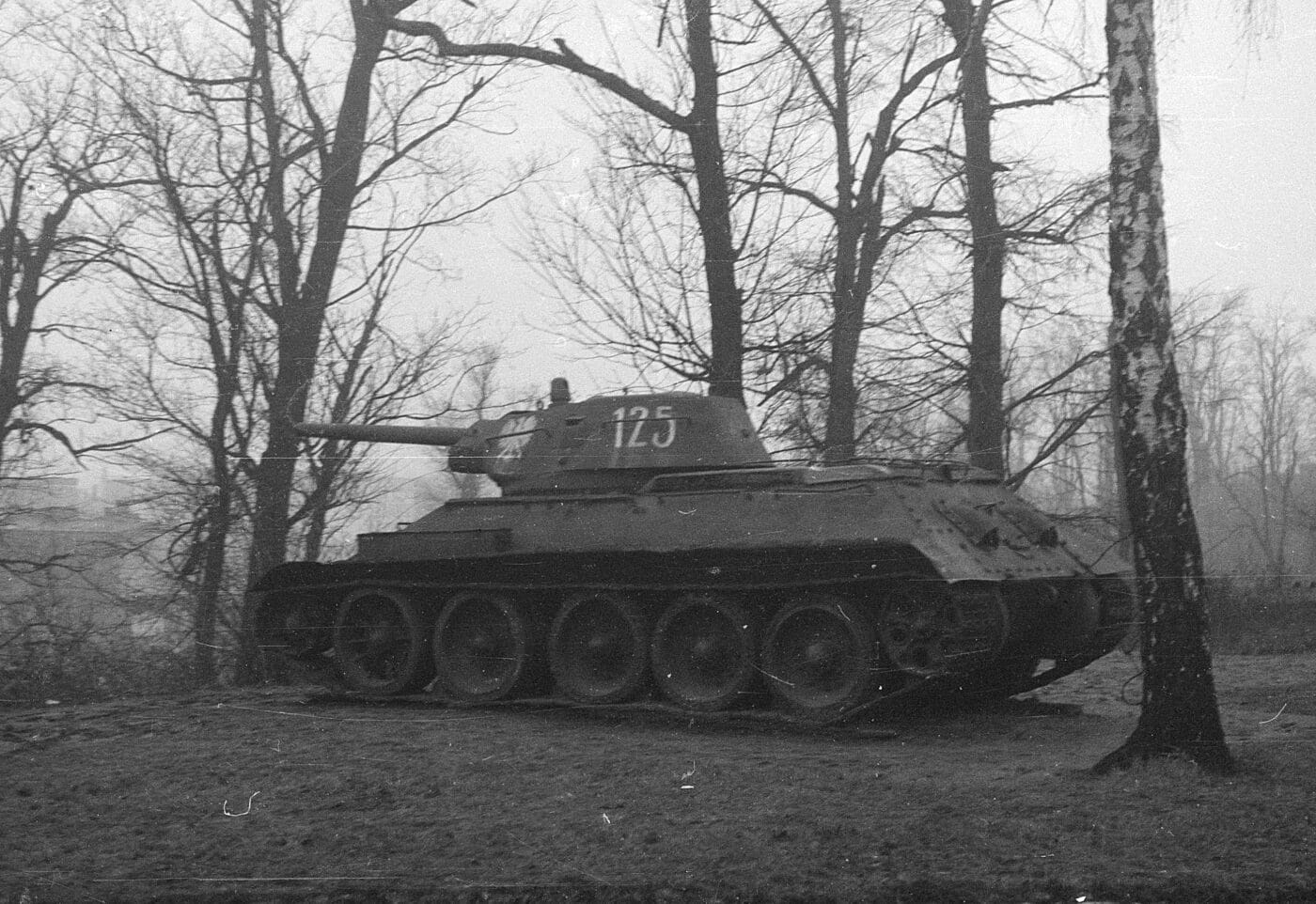
The famous 88mm Flak 18/Flak 36 gun was available, and the 88mm offered tremendous anti-tank capability — proven effective against well-armored vehicles since it was used in emergency situations against enemy tanks beginning in the French campaign during the spring of 1940. Unfortunately for the Germans, during 1941 the 88mm guns were normally dedicated to anti-aircraft work.
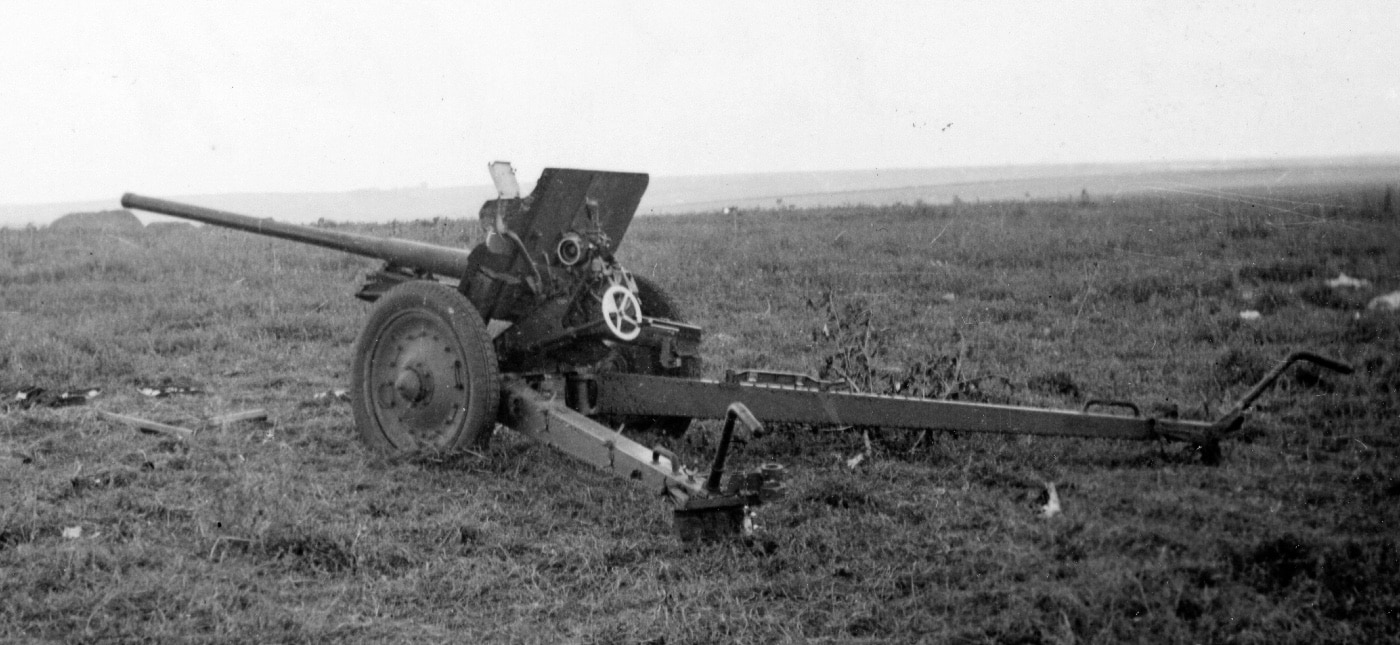
To defend against Soviet tank attacks, their crews were obliged to limber their cannons and redeploy in order to use their weapons in a role where they had little experience. In 1941, a specifically designed 88mm anti-tank was still almost two years away.
Germany’s battle tanks also struggled against the T-34 and KV-1. The Panzer III had been recently “up-gunned” to carry a 50mm (KwK 38 L/42) short-barrel cannon, but this proved only marginally effective against the new generation of Soviet tanks. The Panzer IV continued to carry a short-barrel 75mm gun (KwK 37 L/24) and used a hollow-charge AT round against armored targets. Against the T-34 and KV-1, German tanks’ best hope for a kill was to maneuver in close for a side, or preferably rear shot.
Desperate Measures
German concerns about the new Soviet tanks are evident in the comments of some of their commanding officers. General Paul von Kleist, called the T-34 “the finest tank in the world” during 1941, while famous German tank proponent Heinz Guderian proclaimed it was vastly superior to German tanks at that time.
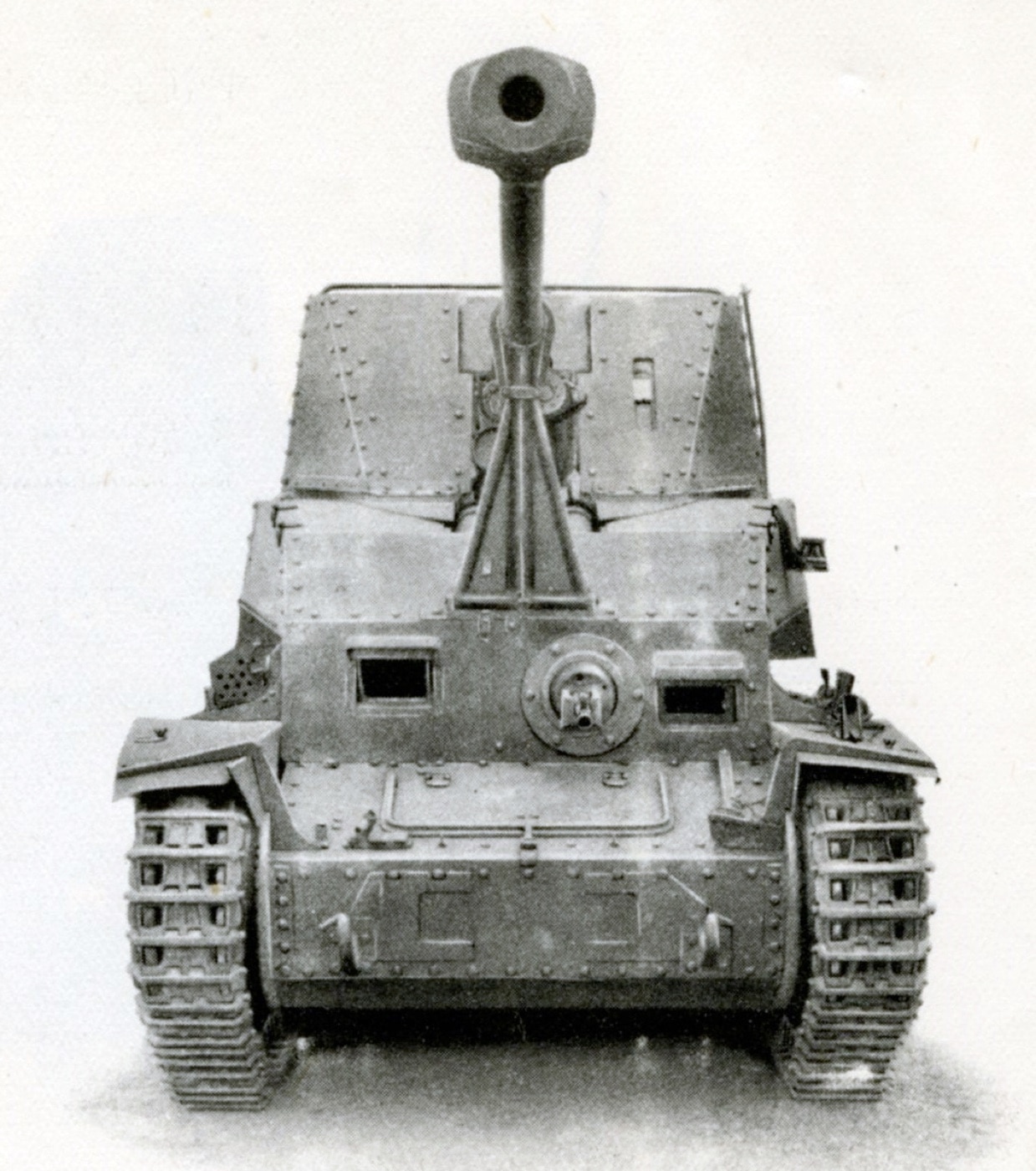
By the spring of 1942 the disparity between German anti-tank capability and the number of T-34 and KV-1 tanks was getting more pronounced. Germany’s anti-tank (AT) need was two-fold: the first was to quickly find an AT cannon with effective performance against the new Soviet AFVs beyond 500 meters. The second aspect was to make the AT weapon mobile enough to keep up with the Panzer forces.
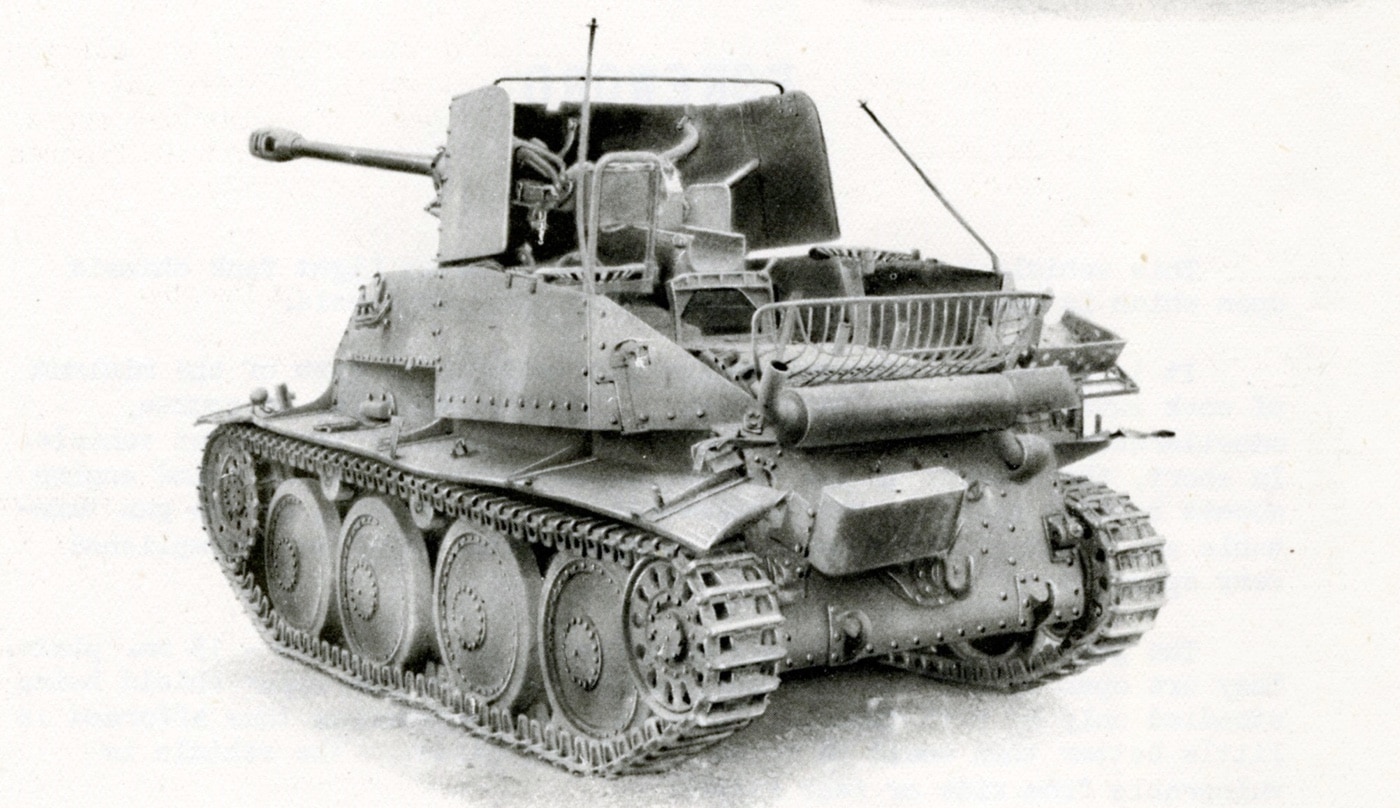
Added pressures were the speed in which a solution could be conceived, produced and fielded, and, of course, the financial costs. A stop-gap solution was created and assembled with a combination of an existing tank chassis and a highly-effective field gun captured in large numbers from the Russians — called the “Marder III, Sd.Kfz. 139”.
Self-Propelled Chassis
When Germany took over Czechoslovakia in 1939, the Wehrmacht inherited a number of well-made weapons systems, including what would become known as the Panzer 38(t). By 1942, the 38(t) was no longer a capable battle tank (armed with only a 37mm gun, and protected by no more than 50mm of armor), but its chassis remained a highly effective automotive platform. Beginning with the Marder series of tank destroyers, the Panzer 38(t) chassis was adapted for a wide variety of self-propelled guns. Production of the standard Panzer 38(t) ausf. G was discontinued, and the turret was replaced with a thinly armored superstructure bolted to the chassis.
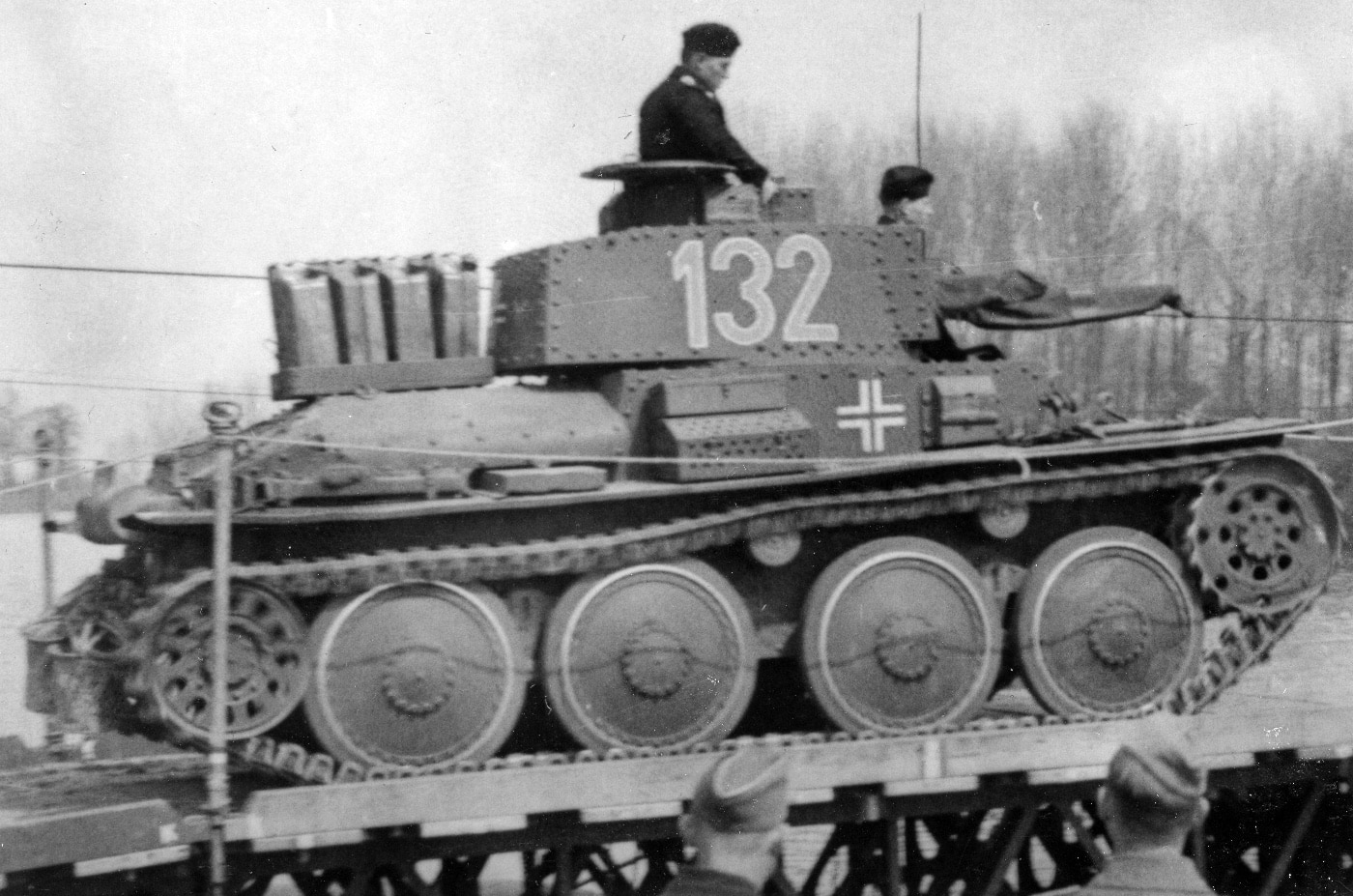
The resulting vehicle had an open top and back — using just an over-sized armored gun shield (10mm) for the gun crew: a gunner, loader and commander. The vehicle was taller than the standard Panzer 38(t) and with its thin armor and open top, the Marder was never intended to be used as “tank”, but rather as a tank hunter, stalking enemy tanks and firing from ambush positions.
The 38(t) chassis was relatively small, and there was little room in the fighting compartment for ammunition storage (usually about 30 rounds of 75mm) or the crew’s personal gear. Consequently, many Marder III are seen with a small trailer in tow and supply vehicles were normally never too far away.
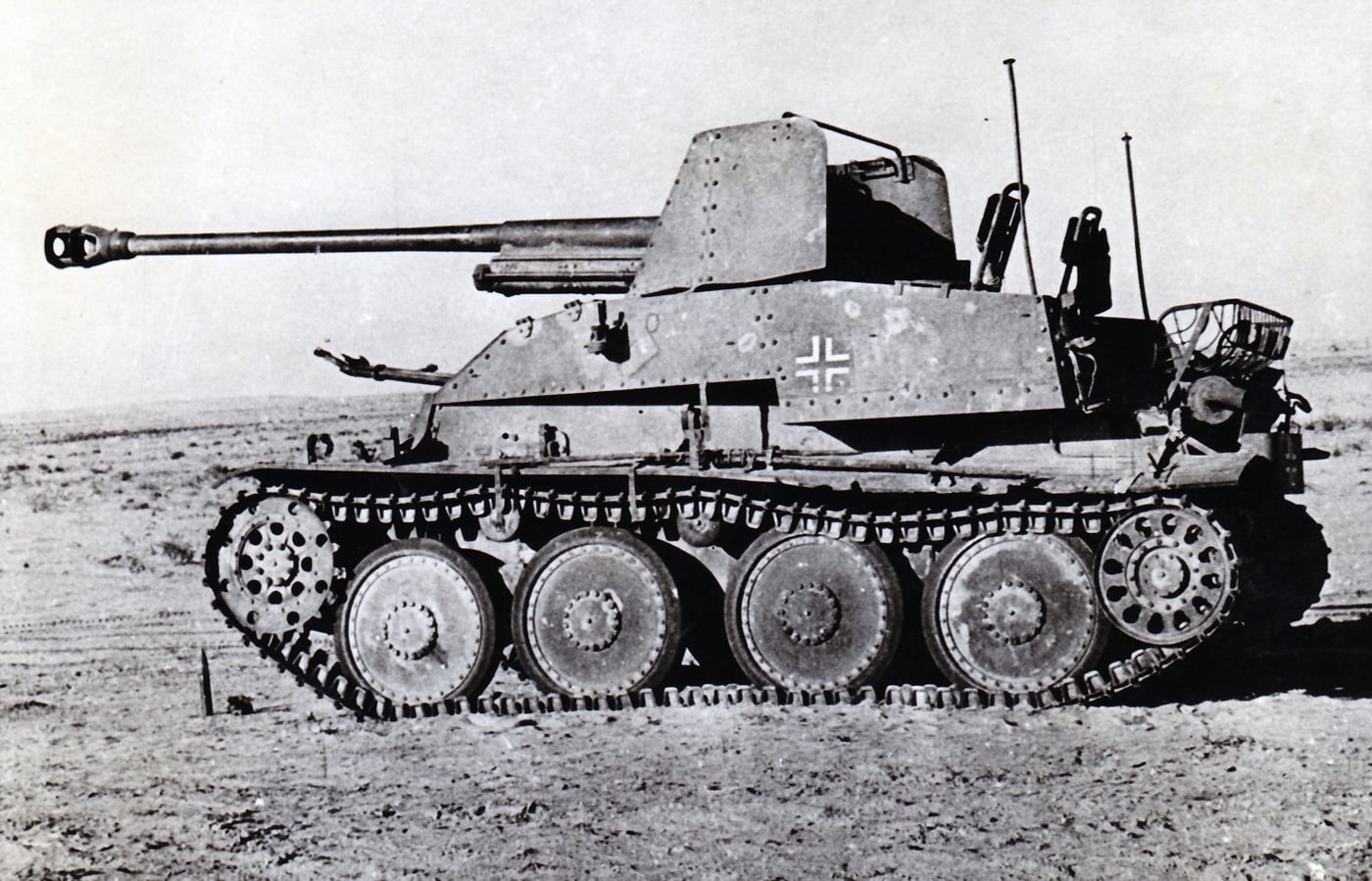
From April through November of 1942, a total of 344 Marder III were built at the CKD facility in Czechoslovakia. In early 1943, 19 more Marder III were created by refurbishing standard Panzer 38(t) tanks still in service.
7.62 cm PaK 36(r) Anti-Tank Gun
During the invasion of the Soviet Union in 1941, the Wehrmacht captured more than 1,200 of the Red Army’s 76mm Model 1936 field gun. The captured Soviet cannon was a powerful weapon, and while it was lacking in some ways as a tank destroying gun, the Germans saw potential. The Wehrmacht sought to field its homegrown 7.5 cm Pak 40 to counter the Soviet tank threat, but production of the Pak 40 was not in full swing until well into 1942.
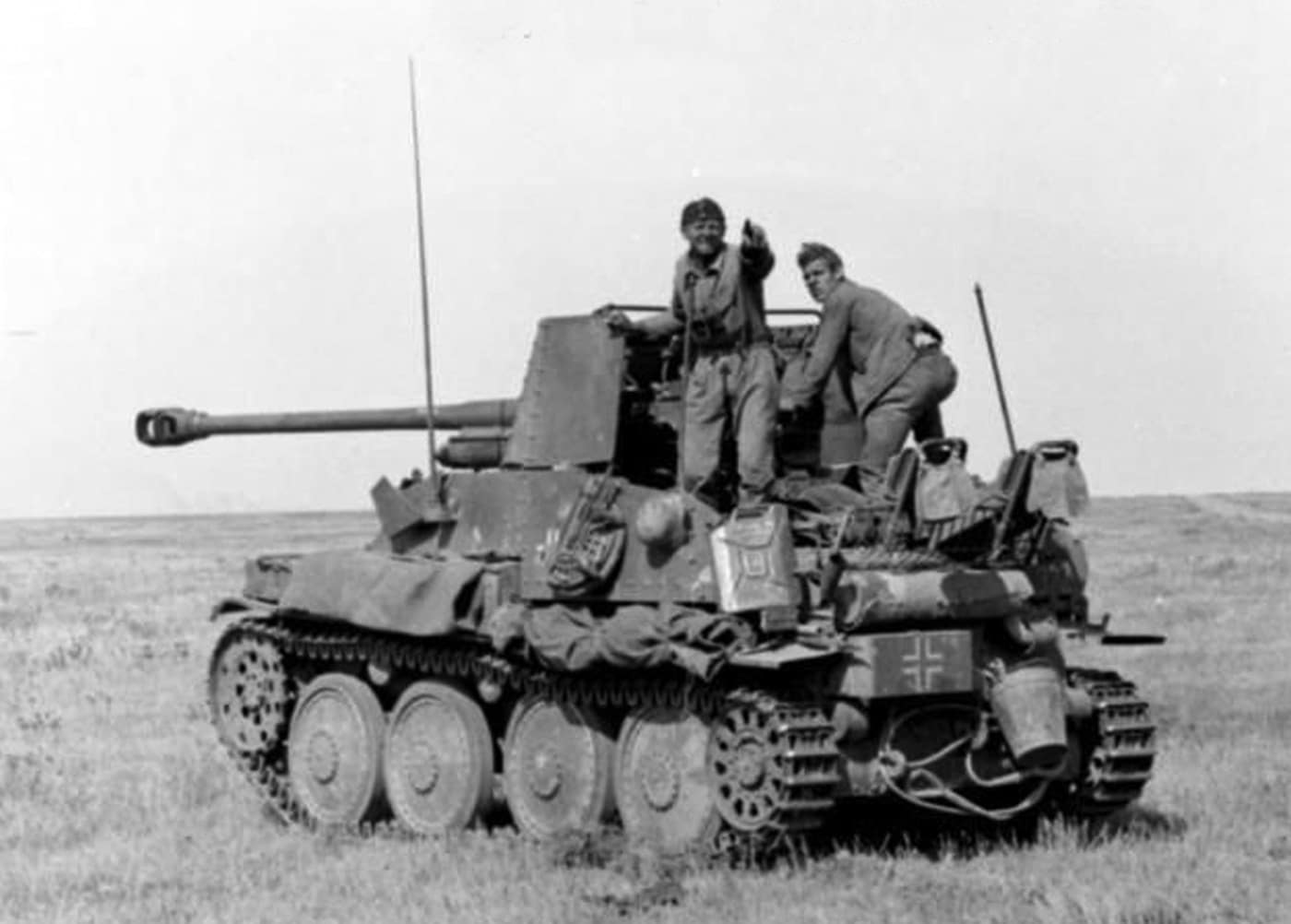
To fill the gap until the Pak 40 was ready, German engineers embarked on a quick modernization program for the captured Russian guns. The gun shield was reduced in size, and the traverse hand-wheel was moved to the left side of the gun, near the sight. The original Russian field gun sight was replaced by a proper anti-tank gun sight that could mount a German standard ZF 3×8 telescope.
The new weapon was originally called “FK36(r)”. As the converted Russian cannon took on more anti-gun characteristics, including a muzzle brake, and was re-chambered for the high-powered German Pak 40 ammunition, the refurbished gun became the “Panzerabwehrkanone 36(russisch)”, or 7.62 cm PaK 36(r).
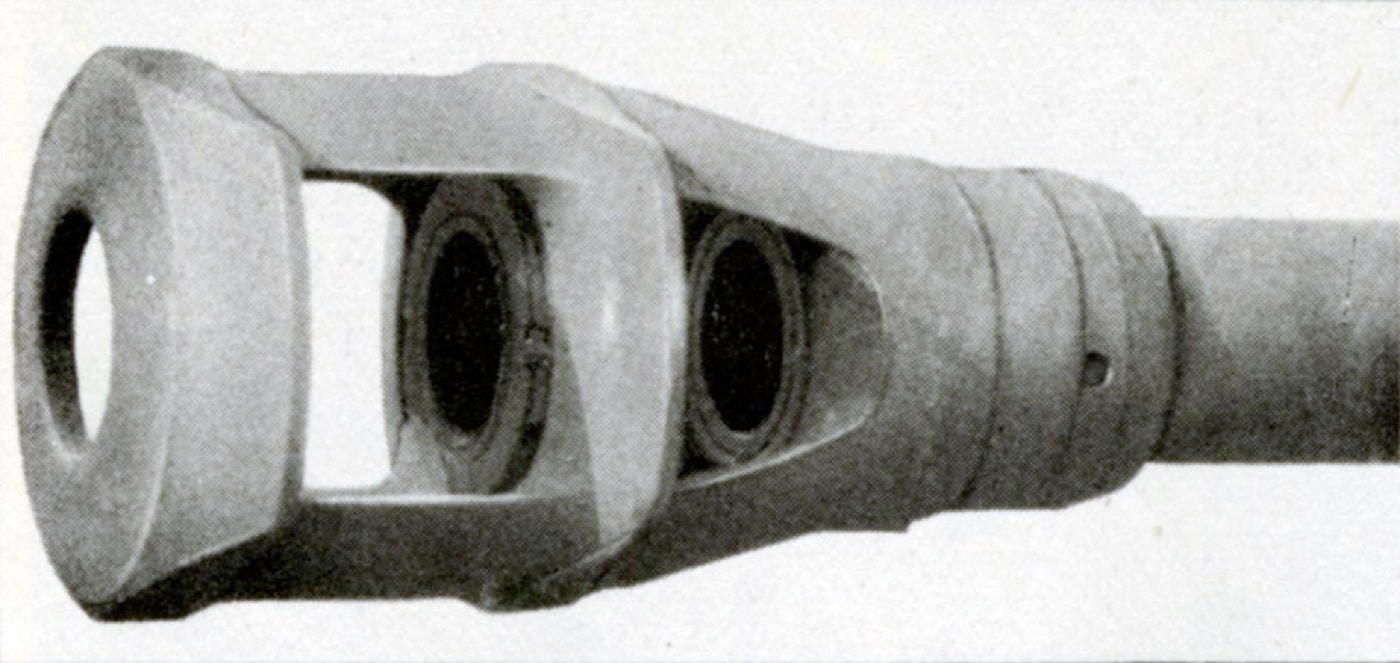
Despite its mixed parentage, the Pak 36(r) proved itself every bit as effective as the all-German Pak 40. And based on the old adage: “the best ability is availability”, the Pak 36(r) was ready to combat Allied tanks throughout the battles of 1942. As for the Marder III, it gave German anti-tank units a tremendous boost when they needed it most. Even though the vehicle was quite tall, had little armor protection for the crew and lacked storage space, the effectiveness of its gun made up for its deficiencies.
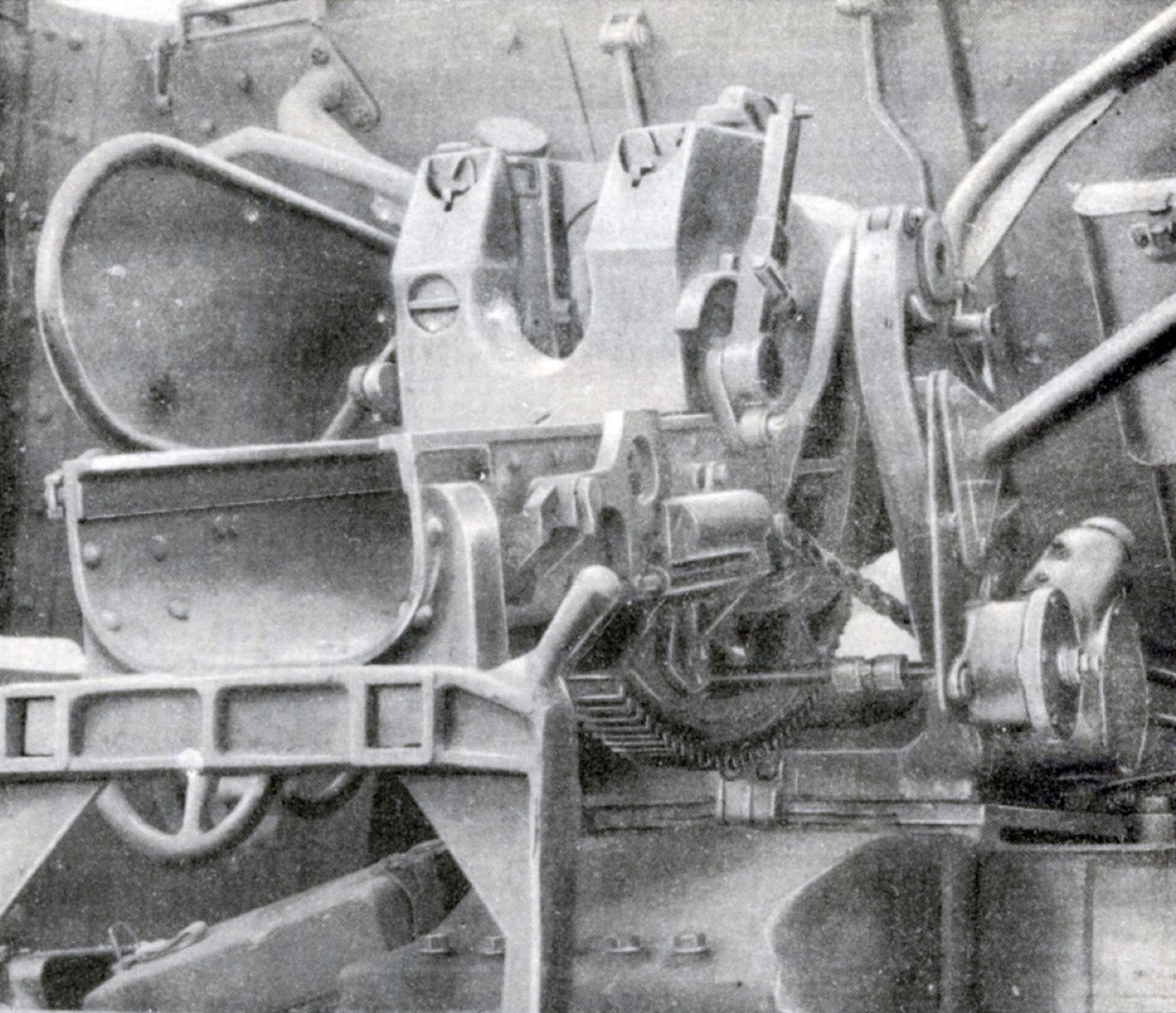
Most of the Marder IIIs were sent to the Russian front and the meat-grinder tank battles in the East. About 75 were sent to the Afrika Korps, and in the latter stages of the fighting in North Africa, the Marders took a heavy toll of British tanks.
British Report on a Captured Marder III Tank Destroyer
The following is taken from a British report on a captured German tank destroyer Marder III. The variant of the Marder III was captured by the British army in North Africa.
General Construction
The main hull and superstructure of this vehicle are substantially the same as the Pz. Kw. 38(t) Czech Light Tank, the subject of S.T.T. Preliminary Report No. 1.
Bolted and riveted construction is employed throughout, and this is in accordance with the usual pre-war Czech practice. Welding is not resorted to in the main construction.
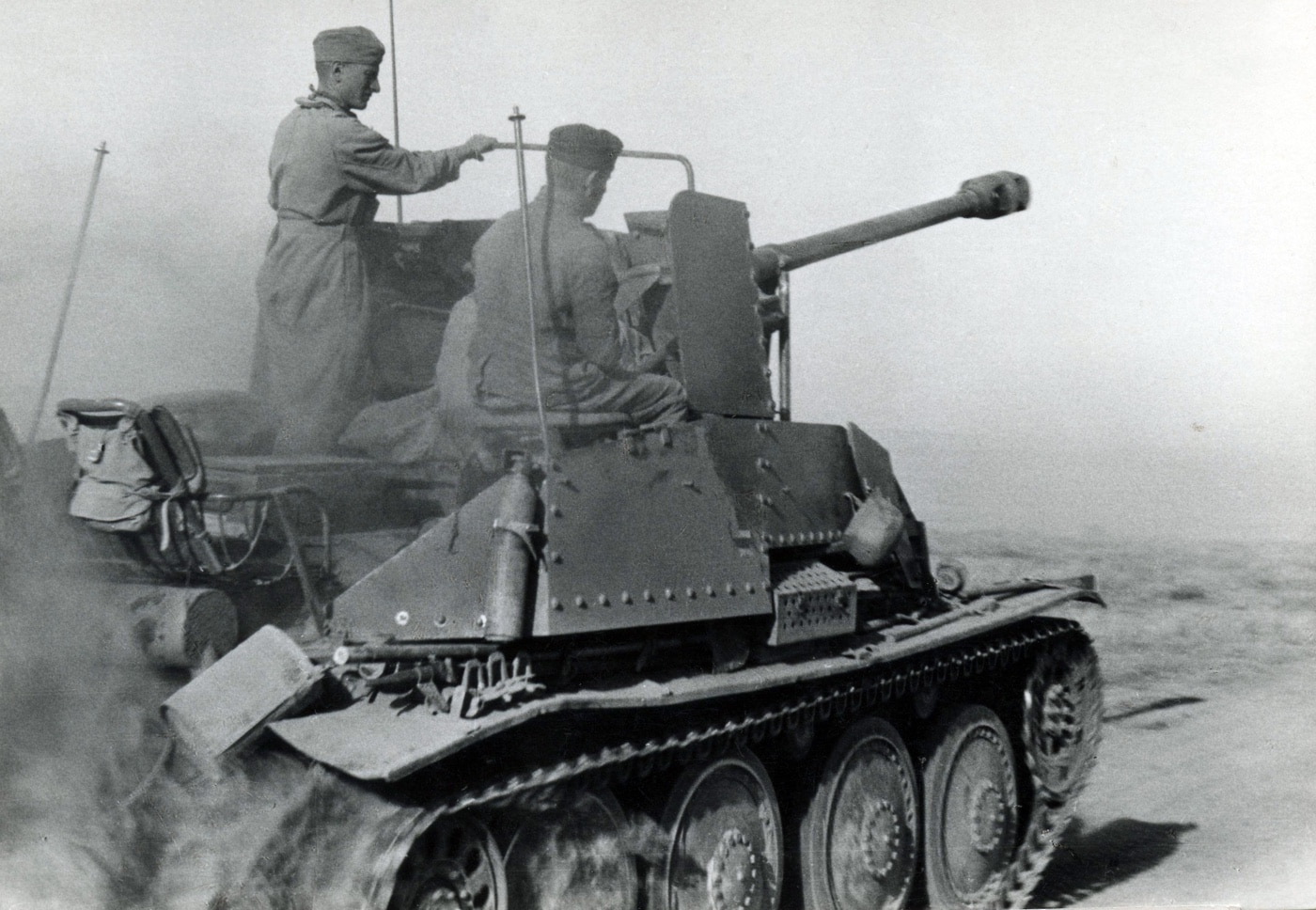
The conversion to a self-propelled mounting has been achieved by the removal of the turret and the superstructure top plate, the mounting for the turntable for the gun being bolted at four points to the angle section formerly carrying the top plate.
This angle section also carries the three-sided lower gun shield or superstructure, the sloping sides of which extend over the track guards. The four-point mounting also provides a stiffening for the top of the hull side plates.
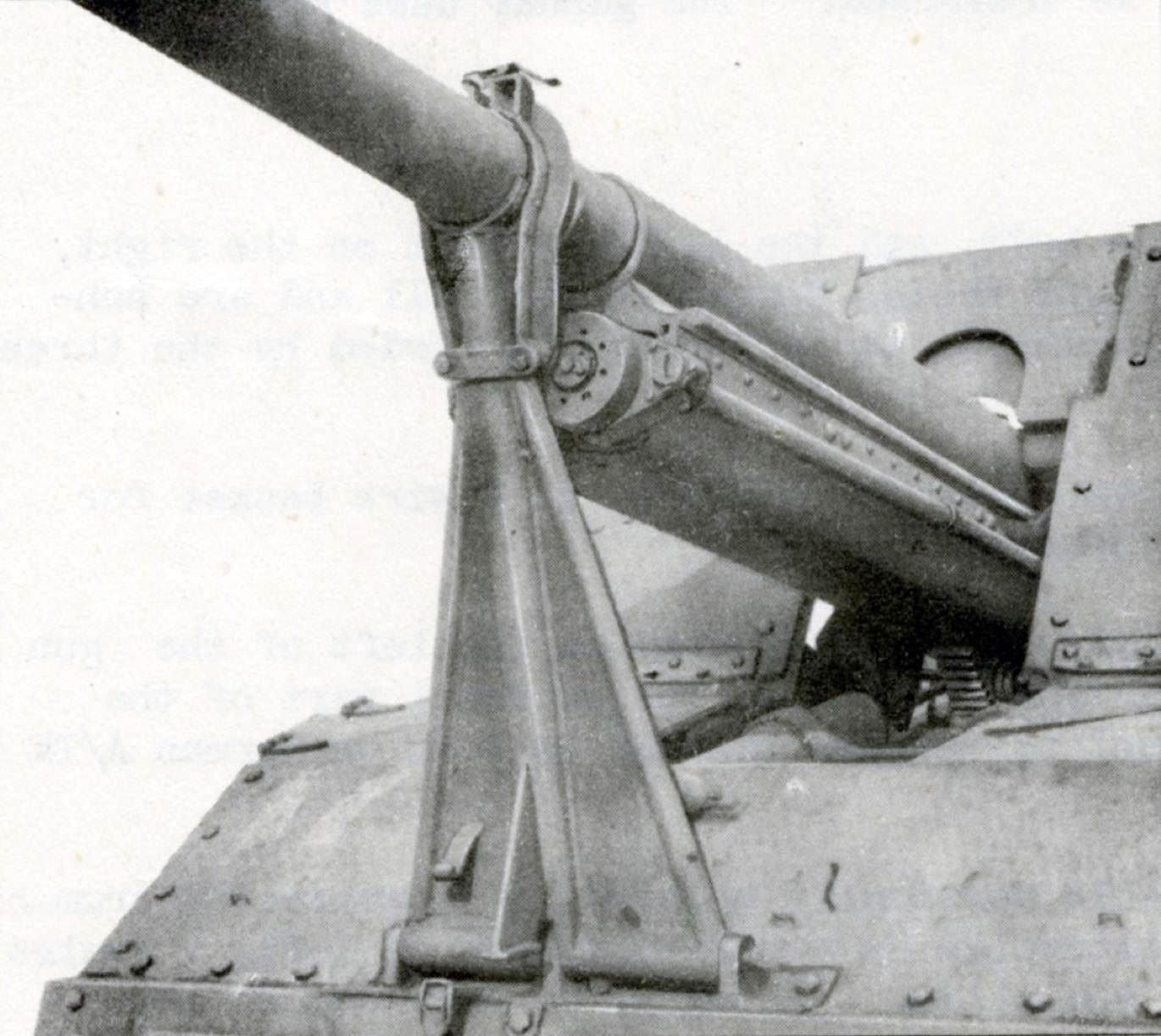
The upper gun shield, which is also a three-sided structure, open at the top and rear. It is secured to the gun by mounting tabular brackets and to the original front gun shield by bolts. The top rear corner of the side plates is steadied by a 1” diameter tie bar.
Mechanical Layout
The mechanical layout and components are identical with those of the Pz. Kw. 38(t) Czech Light Tank.
Steering
The steering of this vehicle is identical with that on the Pz. Kw. 38(t) previously examined. The opportunity for closer examination has revealed more fully its working principle.
Each steering unit comprises a multi-plate clutch and a compound epicyclic of twin sun type.
The first movement of the steering lever disengages the clutch and applies the brake on the epicyclic, thus providing a reduction for a powered turn. A skid turn is obtained by returning the lever to normal and pulling it back to its full extent whilst depressing a spring-loaded plunger at its end. This plunger operates a selector slide in the lever which engages the operating rod of a second brake drum splined to the driving shaft. The steering clutch is simultaneously disengaged, thus breaking the drive from the bevel box.
Communication
Provision is made for the installation of two wireless sets, one receiver, and one transmitter, in the driving compartment. Connections to the sets are provided only for the operator and gun layer.
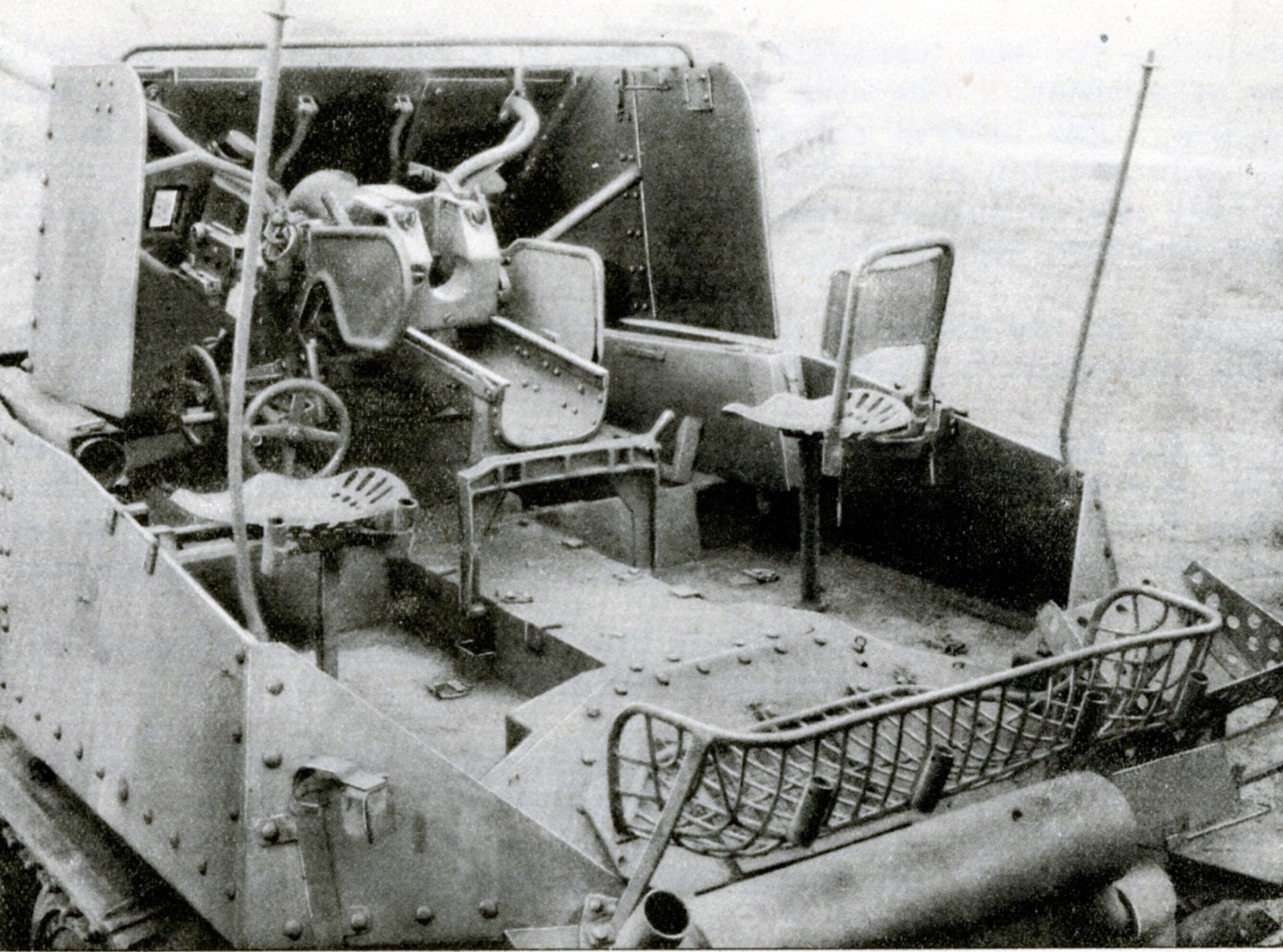
The usual 2-meter rod aerial is carried on the left hand side of the superstructure and is a fixed mounting.
Electrical Equipment
The charging and starting are unaltered from the normal 38(t) Czech Tank. The external lighting is confined to a screened headlamp and a distance keeping tail lamp of the usual German pattern, whilst internal lighting is provided by one festoon lamp for the wireless sets.
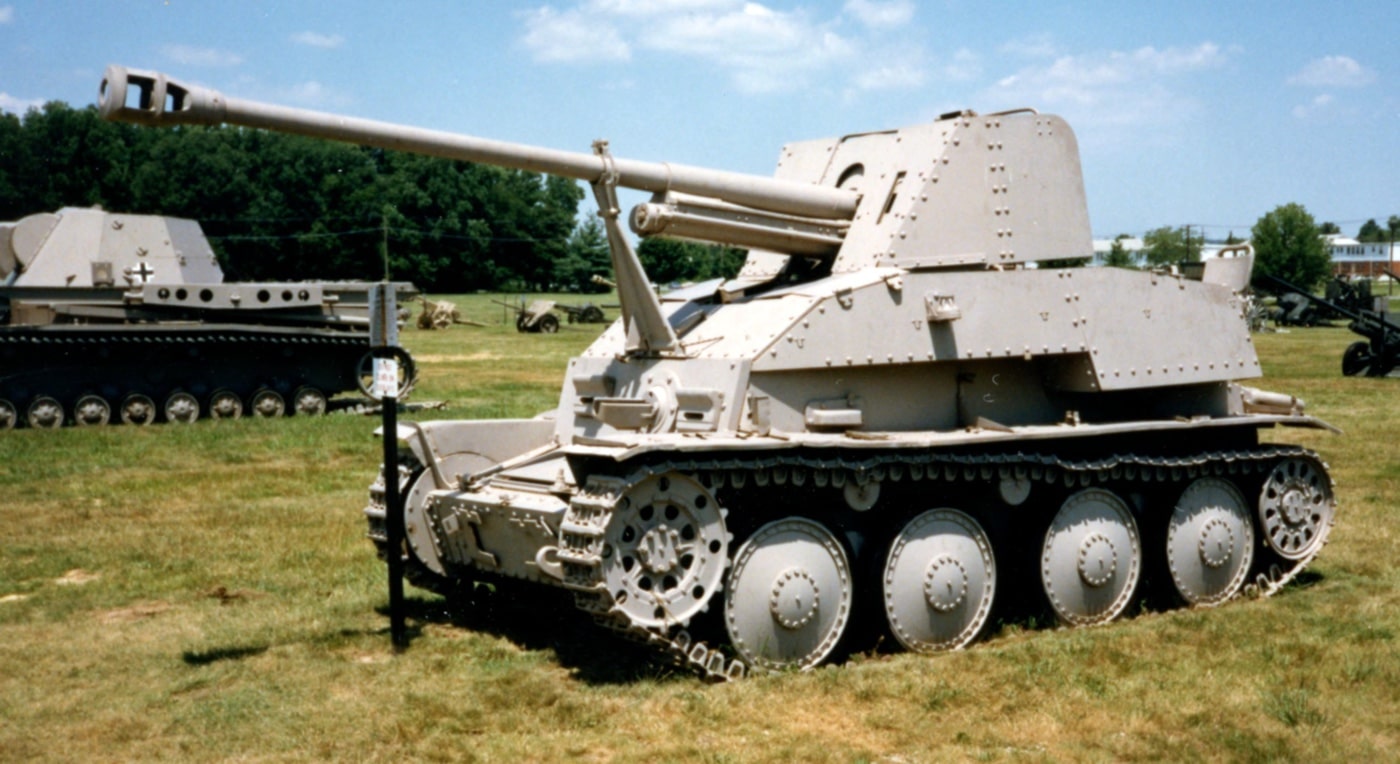
Recognition Points
The vehicle may be readily recognized by its ungainly lines. From the front its low glacis plate with steeply rising gun shields give it a distinctly top heavy appearance. The broadside aspect is equally unbalanced, the long barrel and heavy muzzle brake of the 7.62 cm. gun being outstanding features.
The open superstructure and gun shield and the grill pattern bracket at the rear of the fighting platform form useful recognition points.
Vulnerable Points
The vehicle is obviously vulnerable to any type of attack from the side and rear or from the air. The visors are all vulnerable to small arms attack and cannot be closed down.
Final Thoughts on the Marder III
It is important to remember that the Marder, and vehicles like it, were never intended to be substitutes for main battle tanks. They were specialized tank hunters, thinly armored anti-tank snipers operating from ambush, incapable of slugging it out with enemy tanks or taking part in close assaults on enemy infantry.
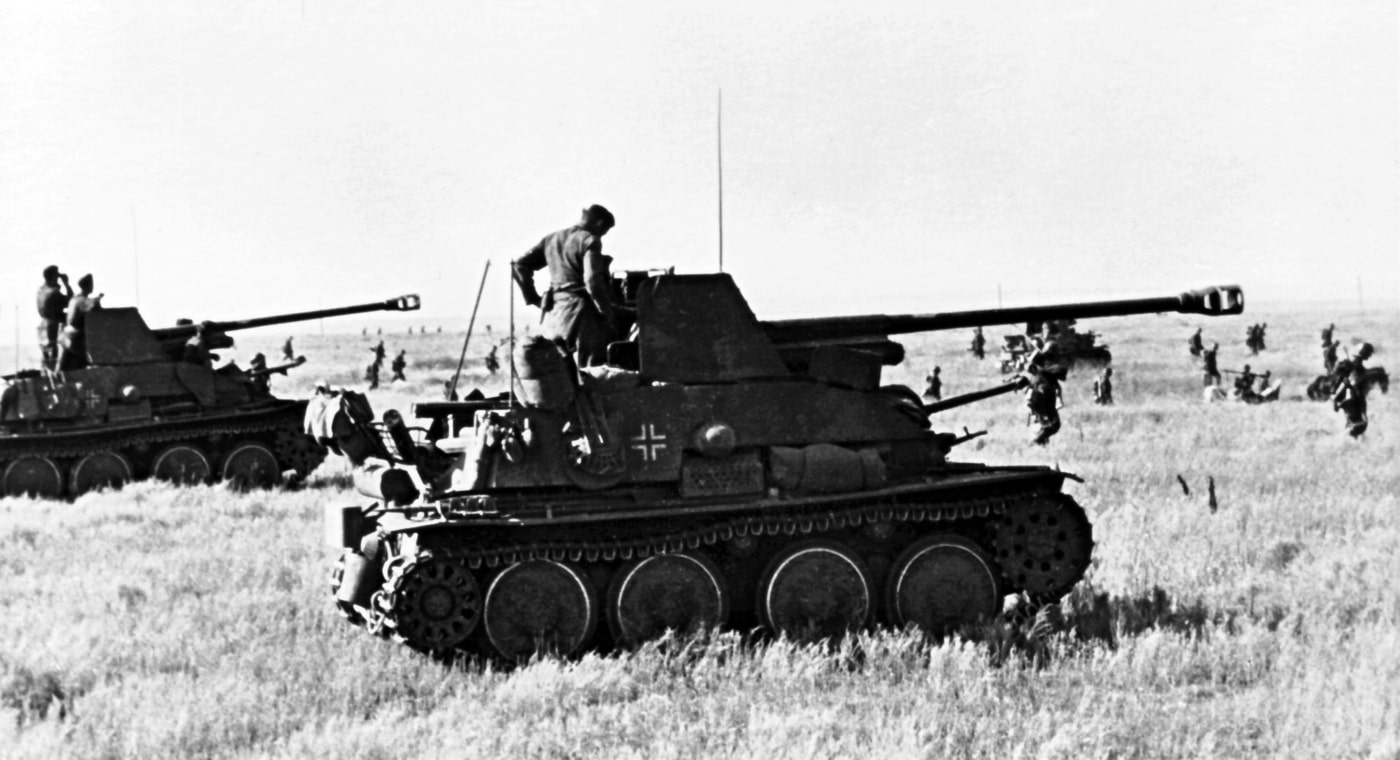
It was a cobbled-together design, making the most of what parts were immediately available before the end of the war. In that light alone, the Marder has to be seen as a success on both the battlefield and the production line.
Editor’s Note: Please be sure to check out The Armory Life Forum, where you can comment about our daily articles, as well as just talk guns and gear. Click the “Go To Forum Thread” link below to jump in and discuss this article and much more!
Join the Discussion
Continue Reading
Did you enjoy this article?

 93
93






